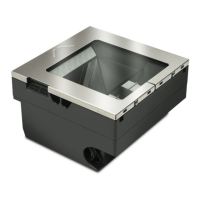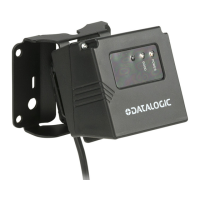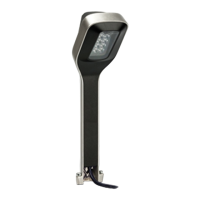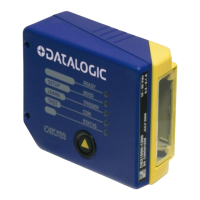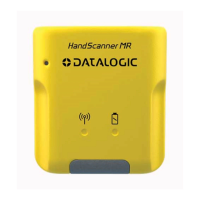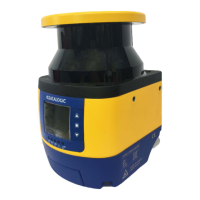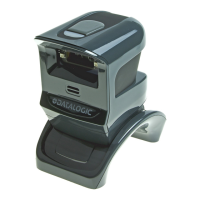Product Reference Guide
57
terminal has been switched off or the store system has been reset while the unit is on. Reset can
also be used to initiate and run the unit’s internal Selftest routine.
Pressing and holding the Scanner Control Button for ten seconds initiates a reset, which is
sounded by a rapid number of beeps. For more information, see the topic,
Power-Up/Selftest &
Pre-Operation earlier in this section.
Scale Adjustments
The scale allows two user adjustments: zeroing and calibration. The first, and most frequently
performed, is ‘zeroing’ the scale. This operation resets the scale’s “at rest” reading to zero which
must be within the range of - 0.2 pounds (- 1.25 grams) to +0.6 pounds (0.27kg) since the last
calibration. While the ‘at rest’ reading remains within the zero range, the scale will automatically
adjust itself to true zero. The scale also automatically zeros itself on power-up if the weight
present on the scale is within these defined limits.
Zeroing the Scale
The zeroing operation may be performed by checkers and other store personnel. Pressing and
releasing the Scale Zero Button should return the scale to Normal Operation. If the zero point
moves out of the zero range due to debris accumulation or other causes, pressing the Scale Zero
Button will not reset the zero point. In this case the weigh platter must be cleaned, debris chutes
cleared of debris or the scale must be recalibrated.
With the scanner/scale powered-up and at operating temperature:
1. Remove everything from the weighing surface of the scanner/scale.
2. Press the Scale Zero Button. (See Figure 58).
3. The Zero
1
light will turn on and the display will show 0.00 lb (0.000 kg). If it does not,
see Chapter 4, Problem Isolation.
4. You have completed the scale zeroing function.
Alternatively, a reset (cycling power to the scanner) may also allow the scale to re-zero.
Calibrating the Scale
The second adjustment, calibration, defines and sets a standard reference weight range against
which all product weights are compared. If your scale is set for weighing in pounds, this range is
0 - 30 pounds, and, if your scale is set for weighing in kilograms, the range is 0 - 15 kilograms.
The scale must be calibrated upon initial installation, whenever the scale cannot be zeroed,
when the scale diagnostics indicate a calibration error, when the weighing measure (pounds or
kilograms) is changed, or when the scale module has been replaced.
Normally, once the scale has been calibrated, the calibration must be verified and/or approved
by a local regulatory body. In many areas, the scale calibration switch must be sealed before
being placed into service. Consult the agency responsible for regulating weighing devices in your
area to ensure that you are meeting all legal and regulatory requirements
Chapter 6,
"Calibration Procedures", describes the calibration sequence and verification process.
Calibration can only be performed if the tamper seal that secures access to the Calibration
Switch is broken and the switch cover is removed. Breaking the seal may legally render the scale
1. Zero light operation is configurable.
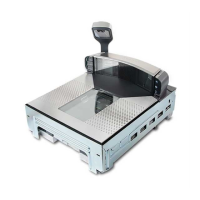
